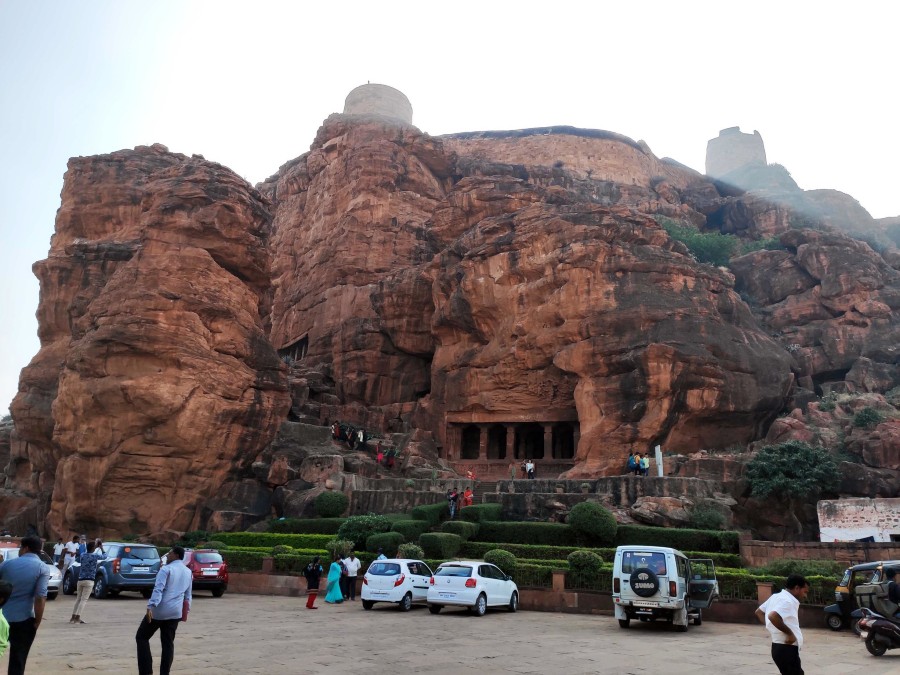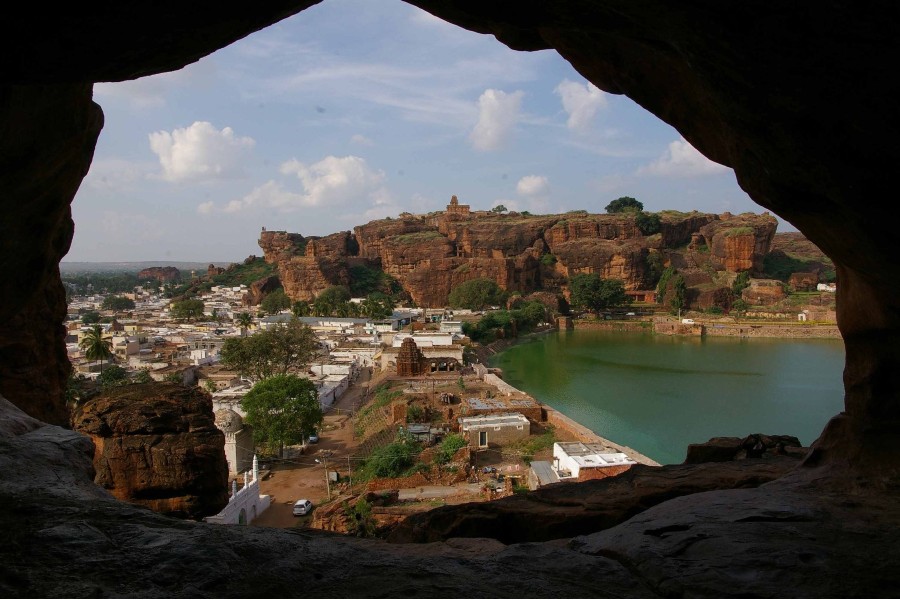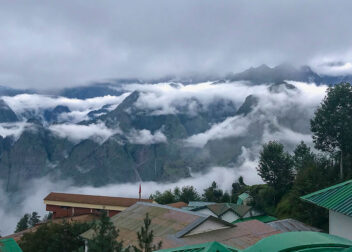Exploring the Magnificence of Badami Caves
Nestled in the heart of Karnataka, India, the Badami Caves stand as a testament to the incredible architectural prowess of ancient civilizations. Carved into the rugged sandstone cliffs, these caves offer a glimpse into the rich history, culture, and artistic brilliance that flourished over a millennium ago.
Unveiling the Origins
Historical Context of Badami

In the 6th century, the Chalukya dynasty ruled the region, and under their patronage, the Badami Caves were hewn out. These caves were primarily created as sacred spaces for religious practices and cultural gatherings.
Artistic Significance
The Marvel of Rock-Cut Architecture
Badami Caves represent an exceptional feat of rock-cut architecture. Intricately chiseled sculptures, awe-inspiring murals, and precisely carved pillars showcase the artistic dedication that went into crafting these monuments.
The Four Cave Temples: A Spiritual Odyssey
Cave 1: The Great Cave Temple
Carved out of red sandstone, Cave 1 is dedicated to Lord Shiva. The majestic portrayal of Shiva in various forms and manifestations captivates visitors. The exquisite detailing in the sculptures and reliefs reflects the devotion and craftsmanship of the artisans.
Cave 2: The Blissful Abode
Dedicated to Lord Vishnu, Cave 2 features an impressive carving of Lord Vishnu in his cosmic sleep posture. The cave’s layout and design embody a harmonious blend of nature and divinity.
Cave 3: The Jain Enclave
Cave 3 offers a unique insight into the Jain faith, showcasing sculptures of Jain Tirthankaras. The serene ambiance of the cave instills a sense of tranquility and contemplation.
Cave 4: The Architectural Gem
Cave 4 stands out for its distinctive architecture, featuring a towering monolithic sculpture of Mahavira, the 24th Jain Tirthankara. The intricacy of the design and the grandeur of the sculpture leave visitors awe-struck.
Beyond the Carvings: Cultural and Historical Significance
Insights into Ancient Life
The Badami Caves provide valuable insights into the social and cultural practices of the Chalukyan era. The depictions of daily life, clothing, and ornamentation offer a glimpse into the lifestyle of that time.
Echoes of Devotion
Religious and Spiritual Significance
These caves were not only architectural wonders but also served as spiritual havens. The energy and devotion imbibed within the walls still resonate, attracting pilgrims and history enthusiasts alike.
Preservation and Tourism
A Journey Back in Time
Efforts by the Archaeological Survey of India have ensured the preservation of the Badami Caves. The controlled influx of tourists allows for the exploration of this historical treasure while safeguarding its integrity.
How to Reach Badami
To reach Badami, you can follow these steps:
- By Air: The nearest major airport to Badami is the Hubli Airport (HBX), which is around 105 kilometers away. From the airport, you can hire a taxi or use local transportation to reach Badami.
- By Train: Badami does not have its own railway station, but the nearest railway station is Badami Road Railway Station, also known as Badami Railway Station. This station is connected to various major cities in Karnataka and nearby states. From the railway station, you can take a taxi, auto-rickshaw, or a bus to reach the town of Badami.
- By Road: Badami is well-connected by road and can be easily reached by buses, taxis, and private vehicles. It’s well-connected to cities like Bangalore, Hubli, and Bijapur. You can take the NH50 (previously NH218) or other state highways to reach Badami by road.
Remember to check the availability of transportation options and schedules in advance to plan your journey smoothly. It’s also advisable to have a map or GPS navigation to guide you during your travels.
Where to Stay
When visiting Badami, you’ll find several accommodation options to suit different preferences and budgets. Here are some places to consider for your stay:
- Badami Heritage Resort: A comfortable and well-maintained resort located close to the Badami Caves. It offers a range of rooms and amenities, making it a popular choice for tourists.
- Krishna Heritage: This hotel offers a blend of modern amenities and a traditional ambiance. It’s conveniently located and provides a comfortable stay for visitors.
- Clarks Inn Badami: A stylish hotel with contemporary design, offering comfortable rooms and good facilities. It’s situated in a convenient location for exploring Badami’s attractions.
- Hotel Rajsangam International: This hotel provides decent accommodation options for travelers. It’s known for its friendly staff and convenient location.
- KSTDC Mayura Chalukya: Run by the Karnataka State Tourism Development Corporation, this guesthouse offers basic accommodation with a focus on affordability. It’s a good option for budget-conscious travelers.
- Guesthouses and Homestays: Badami also has various guesthouses and homestays that offer a more personalized experience. These can provide insight into the local culture and offer a more home-like atmosphere.
- Online Accommodation Platforms: Websites and apps like Booking.com, Airbnb, and MakeMyTrip list a variety of accommodation options in Badami. These platforms allow you to compare prices, read reviews, and choose the best option based on your preferences.
It’s recommended to make your accommodation arrangements in advance, especially during peak tourist seasons. This ensures that you have a comfortable place to stay upon arrival.
Best time to Visit Badami
The best time to visit Badami is during the winter months, from November to February. This period offers pleasant weather with cooler temperatures, making it ideal for exploring historical sites and enjoying outdoor activities. The specific months to consider are:
- November to February: Winter is the peak tourist season in Badami due to its pleasant and comfortable weather. The temperatures are relatively cool, ranging from around 15°C to 25°C (59°F to 77°F). This is the best time for sightseeing, trekking, and exploring the Badami Caves without the scorching heat of the summer months.
- March to May: These months mark the beginning of summer, and while the temperatures start to rise, it’s still bearable for most travelers. However, as you move into May, the heat becomes more intense, with temperatures often exceeding 35°C (95°F). If you can tolerate the heat, you might find fewer crowds during this time.
- June to September: Monsoon season in Badami occurs from June to September. While the landscape becomes lush and green, the heavy rainfall might disrupt outdoor plans and make some areas inaccessible. It’s recommended to check weather conditions and road accessibility before planning a visit during the monsoon.
It’s important to note that during the peak winter months, especially around holidays and long weekends, Badami can get crowded. To enjoy a more peaceful experience, consider visiting during the shoulder seasons of November-early December or late February. Keep in mind that the weather and crowd conditions can vary, so it’s advisable to check current weather forecasts and plan your trip accordingly.
Conclusion
The Badami Caves stand as a timeless testament to the artistic brilliance, cultural diversity, and spiritual devotion of ancient civilizations. These rock-cut marvels continue to inspire awe and wonder, offering a bridge between the past and the present.
FAQs About Badami Caves
1. Are the Badami Caves accessible to all visitors? Yes, the caves are open to visitors of all ages and backgrounds, providing a captivating experience for everyone.
2. How long does it take to explore all four caves? The time required varies, but typically, exploring all four caves takes around 2 to 3 hours.
3. Are there any guided tours available? Yes, guided tours are available for those who wish to gain deeper insights into the historical and cultural significance of the caves.
4. Can photography be done inside the caves? Yes, photography is allowed within the caves, but without the use of flash to preserve the delicate artwork.
5. Is there an entrance fee to visit the Badami Caves? Yes, there is a nominal entrance fee for Indian and foreign visitors, contributing to the maintenance and preservation of the site.



